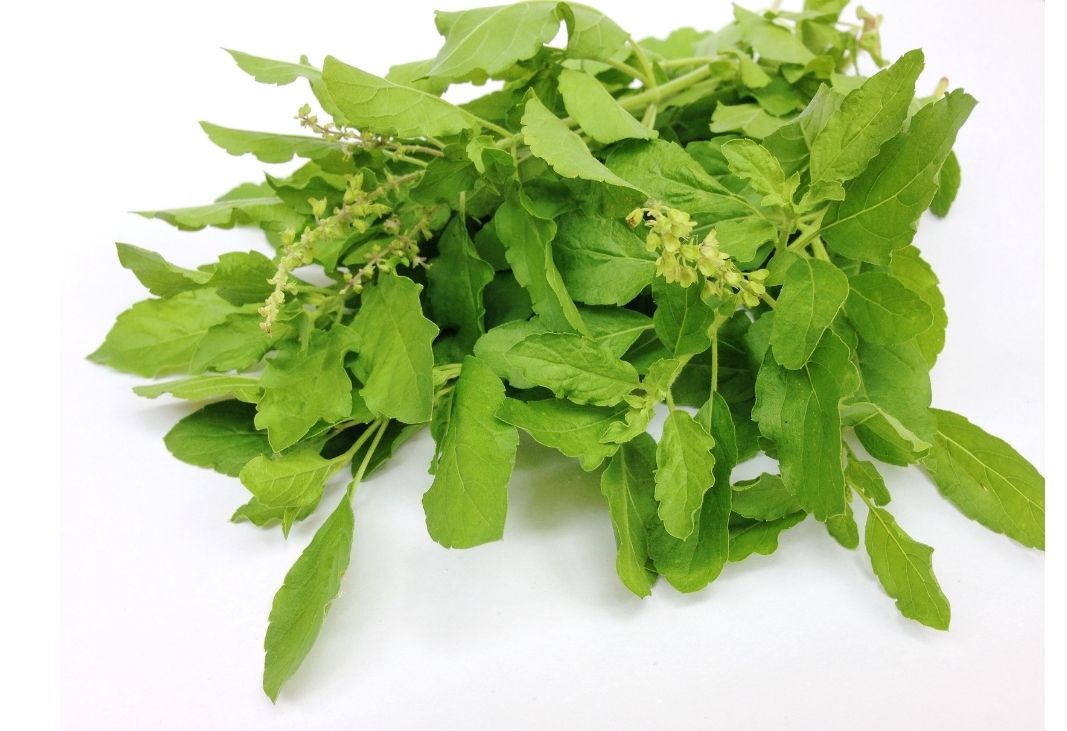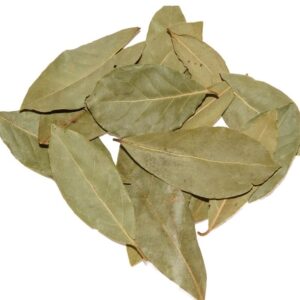Varieties of Basil
Basil exhibits a wide range of cultivars, each with unique flavors and uses:
Sweet Basil (Genovese): The most common culinary variety, known for its sweet, slightly spicy flavor.
Thai Basil (O. basilicum var. thyrsiflora): Features a spicy, anise-like flavor, commonly used in Southeast Asian dishes.
Holy Basil (O. tenuiflorum): Also known as Tulsi, it holds religious significance in Hinduism and is used in traditional medicine.
Lemon Basil (O. × citriodorum): Offers a citrusy aroma, ideal for infusions and teas.
Cinnamon Basil: Imparts a cinnamon-like flavor, often used in desserts and beverages.
Purple Basil: Adds a vibrant color and a milder flavor to dishes.
Medicinal and Cultural Significance
Medicinal Uses: Basil’s essential oils, particularly methyl chavicol and d-linalool, are believed to possess anti-inflammatory and antioxidant properties.
Cultural Importance: In Hinduism, *Tulsi is revered as a sacred plant, often worshipped in households and temples.
Aromatherapy: Basil oil is utilized in aromatherapy for stress relief and mental clarity.
Cultivation Tips
Climate: Prefers warm, sunny environments with temperatures above 12°C.
Soil: Thrives in well-drained, fertile soil with a neutral to slightly acidic pH.
Watering: Requires regular watering but should not be waterlogged.
Harvesting: Pinch off flower buds to encourage leaf growth; harvest leaves before flowering for optimal flavor.
Plant Characteristics
Height: Typically ranges from 30 to 150 cm, depending on the variety.
Leaves: Glossy, ovate, and can be green or purple, with smooth or slightly toothed edges.
Flowers: Small, white to magenta, borne in terminal clusters.
Stems: Square and aromatic.
Growth Habit: Thrives in warm climates and is frost-sensitive.
Culinary Uses
Basil is celebrated for its aromatic leaves, which are used both fresh and dried to flavor various dishes:
Pesto: A classic Italian sauce combining basil, garlic, pine nuts, Parmesan, and olive oil.
Salads: Fresh basil enhances the flavor of green salads and tomato-based salads.
Sauces: Integral in marinara and other tomato sauces.
Garnish: Used to top pizzas, pastas, and soups.
Infusions: Steeped in oils or vinegars to impart flavor.
Beverages: Infused in teas or used as a garnish in cocktails.
SPECIFICATIONS
INGREDIENT STATEMENT: IPM standards & conventional
| PHYSICAL PARAMETERS | SPECIFICATIONS | CHEMICAL PARAMETERS | SPECIFICATIONS |
|---|---|---|---|
| Appearance | A Small & Black in appearance | Purity | 99.5% |
| Texture | Seeds | Moisture | 12% Max |
| Aroma | Delightful Aromatic & Nutty | Admixture | 0.05% |
| Taste | Mild Flavor | Volatile Oil ( ml/ 100 gm) | 1.00% Max |
| Cleanliness | Machine cleaned & sortex cleaned | ||
NUTRITIONAL COMPOSITION
| Nutrient | Amount Per 100 gm of Ingredients |
| Calories | 22 kcal |
| Protein | 3.2 grams |
| Total Fat | 0.6 grams |
| Cholesterol | NIL |
| Carbohydrates | 2.7 grams |
| Dietary Fiber | 0.6g |
| Sugars | 0.3 grams |
| Total Carb | 2.5 grams |
| Calcium | 17% |
| Iron | 17% |
| Sodium | 4.0 mg |
| Vitamin A | 105.0 % |
| Vitamin B-6 | 10.0 % |
| Vitamin C | 30.0 % |
| Vitamin D | 0.0 % |
| Potassium | 295 mg |
| Magnesium | 10.0 % |
Container Capacity
| Type Of Container | SPECIFICATIONS |
| 20 Feet | 16 Metric tons (MT) |
| 40 Feet | 27 Metric Tons (MT) |
OTHERS:
Pesticides: Not guarentee
Allergens: Free from Allergens
(Other mandatory requirements will be in compliance to the respective regulations of the destination country.)
PACKING: 20/25/30/50 Kgs, PP or Craft bags with inner liner. (provide customized packing as per yourrequirements.)
SHELF-LIFE: 24 Months, under proper storage condition.





